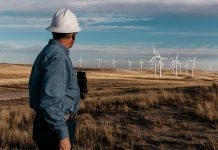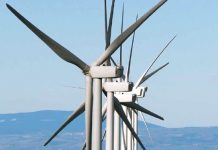Wind energy construction has a seasonal element to it. The summertime may be when many industries ease up on the gas pedal a bit, but not so with wind project installation. That’s when things really start revving up, and in some years, they don’t ease up until the holidays are concluding.
Historically, some of that has been policy driven, particularly the end-of-year push that happens during some years as the holiday season approaches. The summertime ramp up, meanwhile, mirrors other industries that involve construction. The seasons of favorable weather are when projects get built, and industry news always seems to become more active at this time.
A record wind energy construction boom is happening at the moment, with 13,000-plus MW under construction as of the end of the first quarter. So it’s no surprise that this year is proving no different in terms of the summer buzzing with activity.
Underlying trends
During a surge in project activity, it’s interesting to occasionally pause and look under the hood to identify some trends that go along with the boom. First, the obvious: Why all the construction?
The biggest reason is obvious: The Production Tax Credit (PTC) for wind energy, a policy mechanism notorious for its short-term extensions that create a boom-bust cycle in the industry. The tax credit expired at the end of 2013, and to qualify projects had to begin construction before it expired.
That’s the obvious trend, one with which industry observers are all too familiar. Now let’s zero in on a specific market. Texas is the No. 1 wind power state, and has been for years, thanks to its excellent wind resources and stable policies.
Around the beginning of this century, Texas instituted a renewable portfolio standard that catapulted the industry forward. And then in the mid-2000s, it tackled a major issue head-on, and it’s bearing fruit today.
CREZ spurs activity
Texas isn’t just the No. 1 wind state today; it will be for years to come. That’s thanks in large part to the state’s highly effective Competitive Renewable Energy Zone (CREZ) transmission lines and the policies that made them possible.
Back in the mid-2000s, when the CREZ policy was just being developed, the industry referred to the challenge as a quintessential chicken-or-the-egg problem: Transmission providers wouldn’t build lines where there were no generators, and generators (i.e., wind farm developers) couldn’t build projects with no transmission to get their product to market. The CREZ policy solved that by pro-actively planning transmission lines to connect wind resources to the grid and then broadly allocating the cost of those lines, consistent with how Texas has always paid for transmission for all energy sources. A lack of transmission, driven by a lack of effective policies to enable transmission development, persists in many parts of the country, though several regions have followed Texas’s lead in solving the problem.
Reaping the rewards
In Texas, the foresight of the policy is paying dividends. The lines were completed earlier this year, spurring a wind boom in the state. More than 8,850 MW of proposed wind projects have signed agreements to connect to the ERCOT grid, which if all completed would bring it to over 20,000 MW of installed wind capacity. This couldn’t come at a better time for the state, which can use the new wind generation to comply with pending EPA regulations on carbon emissions and the new transmission to meet new reliability needs spurred by growing electricity demand.
The first part of July alone saw a flurry of news about wind energy projects that are taking advantage of the new CREZ lines. GE Energy Financinal Services and E.ON Climate & Renewables North America said they are forming an investment partnership to own and operate Grandview Phase 1, a 211-MW, GE-powered wind farm under construction in the Texas Panhandle. The wind farm, located 26 miles east of Amarillo, will feed electricity into the new CREZ lines.
Also in the early part of the month, EDF Renewable Energy’s 161-MW Spinning Spur 2 Wind Project in Texas reached commercial operation, while the company also announced the close of structured equity financing from GE Energy Financial Services and MUFG Union Bank, N.A. Once again, the CREZ system is the conduit for the energy produced at the wind farm.
Finally, in the same time frame, Westerly Wind, LLC, sold 100 percent of the ownership interests in the South Plains Wind Project, a facility in the late stages of development, to First Wind so that it can bring the project across the finish line. The South Plains Wind Project is in Floyd County, northeast of Lubbock, Texas.
How will the energy be shipped off to load centers? You guessed it — the CREZ system.
|
|
(202) 383-2500 |
|
www.awea.org |
|
info@awea.org |
|
|
AmericanWindEnergyAssociation |
|
@AWEA |
|
american-wind-energy-association |
|
|
www.aweablog.org | ||||



























